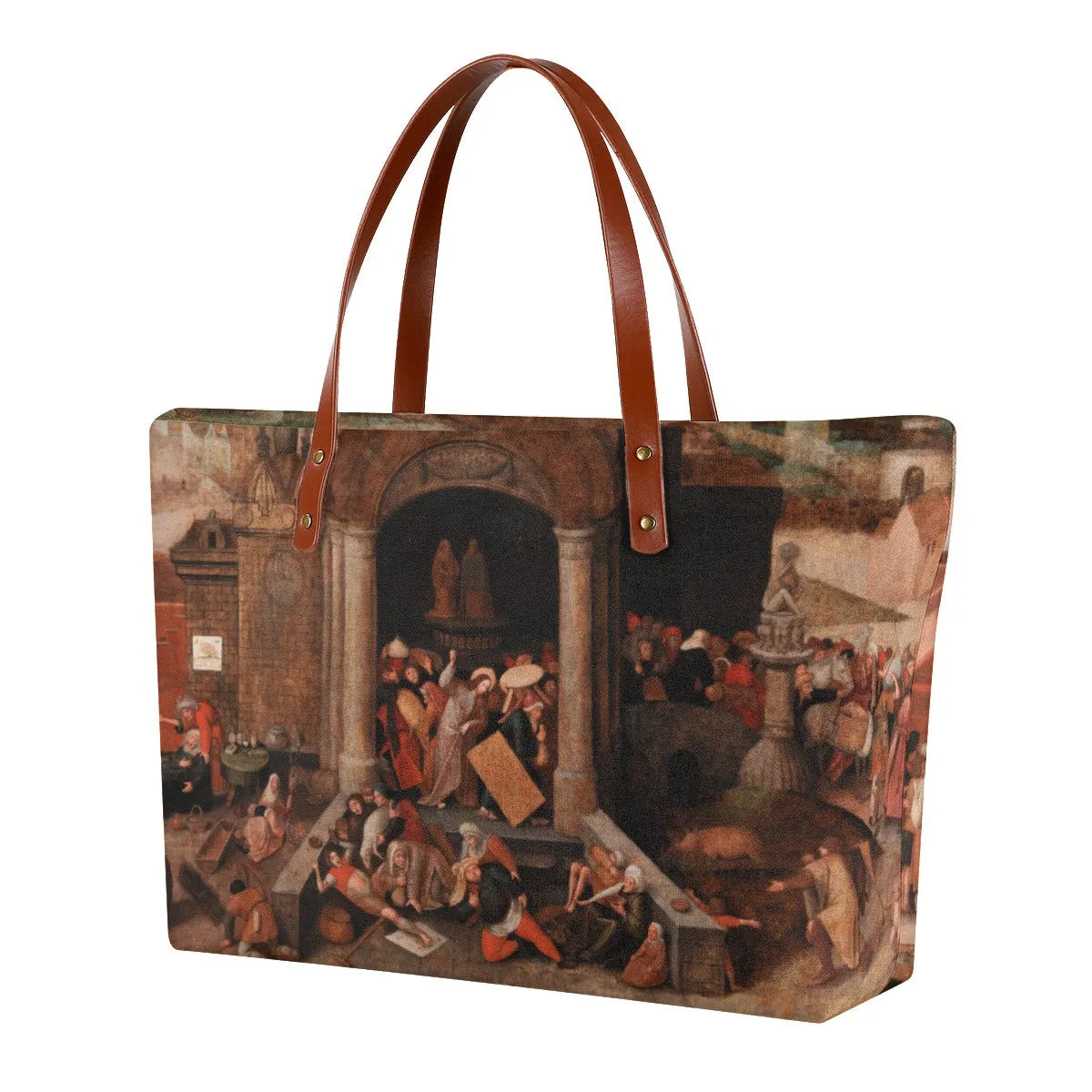



Christ Expels the Peddlers by Hieronymus Bosch Tote Bag
Step into the world of iconic art with our "Christ Expels the Peddlers" tote bag, featuring the captivating masterpiece by Hieronymus Bosch. This isn't just a bag; it's a canvas that captures the essence of a profound moment in history. Embrace the fusion of art and style as you carry this exquisite tote, inviting conversations and admiration wherever you go.
Immerse yourself in a transformative experience with our tote bag. Hieronymus Bosch's masterpiece "Christ Expels the Peddlers" comes to life in intricate detail, inviting you to witness a pivotal moment in art and theology. Each stroke of the brush, each expression on the canvas, tells a story of defiance and virtue. Through this tote, you become a bearer of history, embracing the power of art's storytelling.
- Made of Diving Cloth
- Waterproof Fabric
- Large capacity
- Black zipper and Lining
- Brown strap
- Double-sided Famous Painting Art
Discover the surreal and enigmatic world of Hieronymus Bosch, one of the most celebrated artists of the Renaissance period. Here are more of Hieronymus Bosch's Famous Paintings.
About the artwork
We are aiming to have your order dispatched from our facility within 48 hours. However, please bear with us in case we are spending extra time in checking / perfecting your items, particularly during the peak season around end of the year. This does not include weekends or holidays.
Purchases made after 6pm PT will not be shipped out until the next business day. If you order after 6pm PT on a friday, your order will likely be shipped out on the following monday. For more information click here.
We provide a return policy, allowing customers to return products within a specified timeframe if they are not completely satisfied. For more information click here.
We offer a range of secure payment methods, including major credit cards and debit cards such as Mastercard, Visa, and American Express. Additionally, we support digital wallets like Apple Pay and allow for seamless transactions through trusted platforms like PayPal. For more information click here.
Choose options




20% Off Everything - Limited time only.
Enjoy Free Shipping on All Orders!
